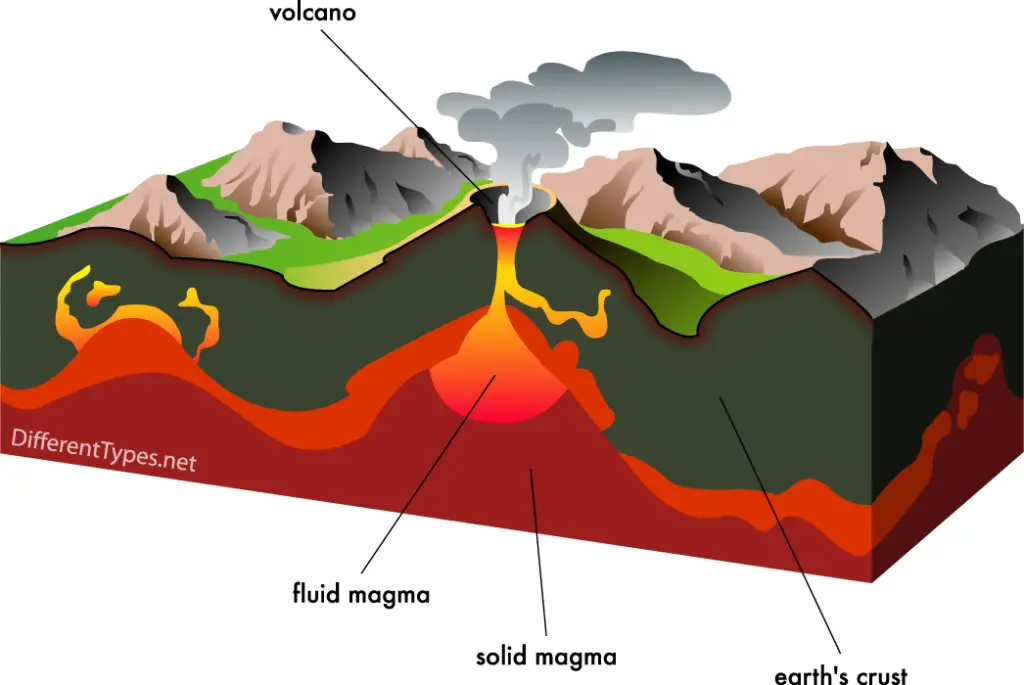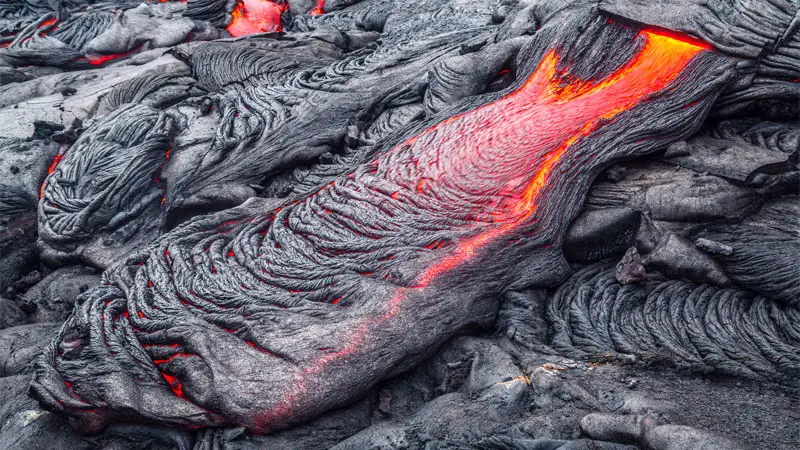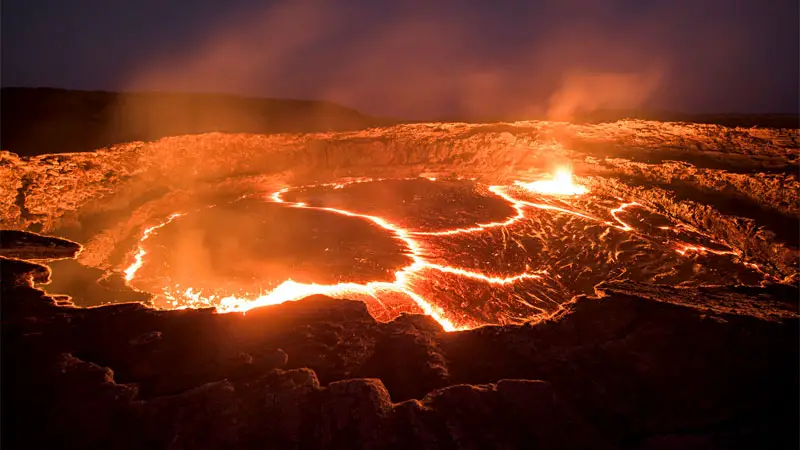Everyone remembers the popular science experiment with vinegar and baking soda. In fact, for most of us, it was presented as an artificial volcano. Volcanoes are vents that lead beneath the crust of the planet, allowing pressure and molten rock to escape onto the surface in the form of lava.
Something you might not have known, however, is that there are actually many kinds of magma (that molten rock below the crust). In fact, there are also many types of volcanoes and even lava.

There are approximately seven major types of lava, distinguished primarily by the amount of silica present. The silica affects other distinguishing features, such as temperature, thickness, and gasses contained. The higher the silica content, the thicker and cooler the magma will be and the more gaqsses it will likely contain.
Fun Fact: The University of Syracuse is the only place in the world where lava is artificially created for the purpose of study. The manmade magma used is carefully formulated to match the following types and poured out as lava from a giant furnace so that volcanic activity can be observed and studied safely.
Types of Magma

1. Andesitic Magma
Containing between 55 and 65 percent silica content, andesitic magma is firmly in the middle of the scale for silica, but not for everything.
It tends to have an average amount of calcium, iron, magnesium, potassium, and sodium – minerals commonly found in magma. It’s often co infused with intermediate magma, although the two have their differences.
Temperature-wise, andesitic magma runs between 1,471 and 1,832 degrees Fahrenheit. One of the most recent eruptions containing this type of magma was Mount St. Helens, and may be present in some smaller to medium earthquakes. When ejected as lava, it’s mildly explosive and will cool into andesite.
Read Also: 13 Types of Terrain
2. Basaltic Magma
Right below andesitic magma on the silica content scale, basaltic magma has roughly 45 to 55 percent silica content. However, it actually is a step above andesitic in terms of temperature, ranging from 1,832 to 2,192 degrees Fahrenheit.
It’s the most dangerous kind of magma to study up close and personal, so scientists are still learning about its exact properties.
It is the least viscous of all magma types (while still making molasses look like a speed demon) and has a high amount of calcium, iron, and magnesium. However, potassium and sodium contents remain low, so this isn’t the kind of magma to feed your rock eating pets.
Found in many volcanic hotspots, it has a low gas content and turns to basalt when it cools on the surface.
3. Felsic Magma
At 65 to 70 percent silica content, felsic magma is the thickest and gassiest of all magma types. It’s a “cool” 1,202 to 1,472 degrees Fahrenheit but the thickness and gas content means it’s the most explosive of magmas, often forming bubbles that then burst.
Once cooled, felsic magma often turns into dacite or rhyolite rock. Due to their volatile nature, felsic magma often creates calderas in volcanoes.
This form of magma is quite common, but is around mainly around the edges of oceanic tectonic plates where they meet land plates. As one plate is pushed beneath the other, saltwater seeps in, resulting in a molten rock with high potassium and sodium content but very poor amounts of calcium, iron, and magnesium.
4. Intermediate Magma
This type of magma is often confused with andesitic magma because it frequently becomes andesite and has similar qualities to andesitic magma. However, intermediate magma remains around 60 percent silica.
It has a nearly identical temperature range to andesitic magma as well. It tends to be quite thick and gooey and the Andes have many areas shaped by this form of magma.
See Also: 11 Different Kinds of Geodes
5. Mafic Magma
Mafic magma is a close kin to basaltic magma, having a silica content of roughly 50 percent and temperatures of 1,832 to a blistering 3,632 degrees Fahrenheit.
Eruptions of mafic magma are quick and lack the explosiveness of higher silica types. Once cooled, it turns almost invariably into basalt and has a very high iron and magnesium content.
6. Rhyolitic Magma
This is actually a hybrid form of magma, containing both basaltic magma and at least one other silica source. The qualities of this magma type can vary greatly as a result.
However, there are a few key factors that can identify this magma type. For example, it contains rhyolite, a high silica mineral that has a similar consistency to toothpaste when molten.
This type of magma is famous for creating mounds and lava domes. When gasses are present, it can become explosive, resulting in the formation of pumice. Conversely, it can cool into glasslike obsidian, a rock with a molecular structure so defined that a broken edge actually is sharper than a surgeon’s scalpel.
7. Ultramafic Magma
You’ll probably have to pay a visit to Io, Mercury, or Venus if you want to see this type of magma in action. That’s because it runs at a crisp 2,900 degrees Fahrenheit or hotter. Also known as komatiite magma, it’s runnier than any other type of magma but thankfully no longer flows on our planet.
Studies of rock left over from the crust’s formation suggest ultramafic magma has the lowest silica content – as low as 40 percent – but is very high in calcium, iron, and magnesium content. While once the most common type of magma in the world, its terran existence is not missed by any but the most dedicated of scientists.

